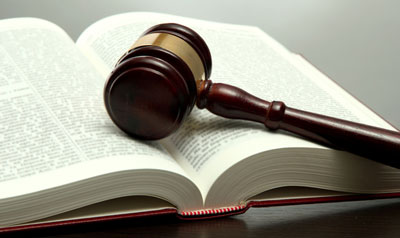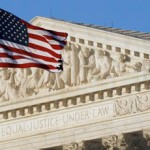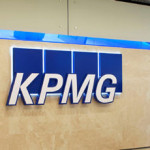Big Law Firms Winning More of Intellectual Property Work

As disputes over patents, copyrights, trademarks and trade secrets have grown, the nation’s biggest law firms have wrested away much of the lucrative intellectual property litigation work from smaller boutique firms.
Last year, the 50 largest firms had 61 percent of the specialized litigation work, up from the 36 percent in 2011, according to an analysis released on Tuesday by Lexis/Nexis CounselLink, which processes legal invoices.
The share of intellectual property business at smaller firms dropped, with legal work at firms employing 201 to 500 lawyers falling to a 13 percent market share last year, from 35 percent four years ago.
The analysis, called Enterprise Legal Management Trends, is based on examining four million law firm invoices processed since 2009, billing corporations a total of $18 billion. CounselLink of Raleigh, N.C., issues an analysis of its findings twice a year.
The heavyweight law firms, the analysis found, outflanked their smaller rivals by being more adaptable in their billing arrangements and using “flexible staffing, including contract lawyers and assigning work to more junior partners to compete on costs.”
The report did not identify the firms whose billings were examined, but their size — 750 or more lawyers — generally mirrors The American Lawyer’s list of the top 50 firms. The financial stakes for law firms are high enough that The National Law Journal publishes an annual “Intellectual Property Hot List” to single out the top 20 performers in the specialized legal area.
Last year, for example, Morgan, Lewis & Bockius, which represents technology giants like Oracle and Facebook, made the list. The firm, which is based in Philadelphia and has 2,000 lawyers globally, has expanded its practice “significantly in the last five to 10 years, and even in the last 12 months,” said Eric Kraeutler, who heads the firm’s 200-lawyer intellectual property practice.
The group, the firm’s fourth-largest practice group, represents large clients like the University of Pennsylvania, which was involved in a complex legal tangle over a new therapy to battle cancer, a case that was recently settled. If the firm reaches a forecast of $2 billion in overall revenue this year, it will be among the country’s five top-grossing firms.
As the demand grew for lawyers versed in patent and other technical areas, the law firm BakerHostetler broadened its practice last year by combining with Woodcock Washburn, an intellectual property boutique firm, for a total of 940 lawyers.
The combination “doubled the 75 lawyers we had then. And that already had expanded tenfold from nine lawyers when I joined the firm in 2001,” said John H. Weber, the national chairman of the firm’s intellectual property group.
The practice is the firm’s third-largest and contributes 20 percent to 25 percent of its revenue, he said. Its clients include Microsoft and Comcast.
The proliferation of patent challenges — and defenses — has been a boon to law firms, which have had to reshape their business models after the financial crisis. As corporations have reduced outside legal expenses, law firms have had to look for new revenue streams and to be flexible in their traditional billing practices.
“Big Law isn’t taking this space by brute force, but rather by focusing on right-size staffing on corporate client accounts,” said Kris Satkunas, the report’s principal author and director of CounselLink’s strategic consulting.
Even so, according to the report, partners at the biggest firms “are billing few hours on intellectual property matters handled by their firms.” Invoices submitted by the largest firms billed less than 1 percent of partner time on patents and other legal work listed as intellectual property litigation, the report found, as firms apparently shifted work to lower-level and lower-paid lawyers.
In contrast, firms with 201 to 500 lawyers billed a much larger portion of partner time — 20 percent to 60 percent — on intellectual property work.
Other studies — many of which rely on law firm self-reporting — have concluded that corporations are willing to pay dearly for top-notch legal expertise and the number of lower-paid junior partners and associates has suffered as a result. But the CounselLink report underscored its conclusions with metrics that median partner rates at the giant firms have declined for four consecutive years. In 2011, the partner rate was $656 an hour, which dropped to $622 an hour in 2014.
And hourly compensation for smaller firm partners continued to rise — to $651 last year from $560 in 2011 — as small law partners continued to work on intellectual property matters instead of farming work out to their subordinates.
More broadly, the analysis also found that law firms actively compete for the valuable intellectual property business through alternative payment arrangements like a set fee rather than traditional hourly billing. This is especially true in the pharmaceutical and the scientific and technical industries. Some 19.5 percent of pharmaceutical companies, for example, negotiated billing arrangements, up from 3.3 percent of the companies in 2011, according to the study findings.
“When I started here as a lawyer in 1980, business development was waiting for the phone to ring,” said Mr. Kraeutler of Morgan, Lewis. “The situation has changed.”
Source: NYT – Big Law Firms Winning More of Intellectual Property Work





























